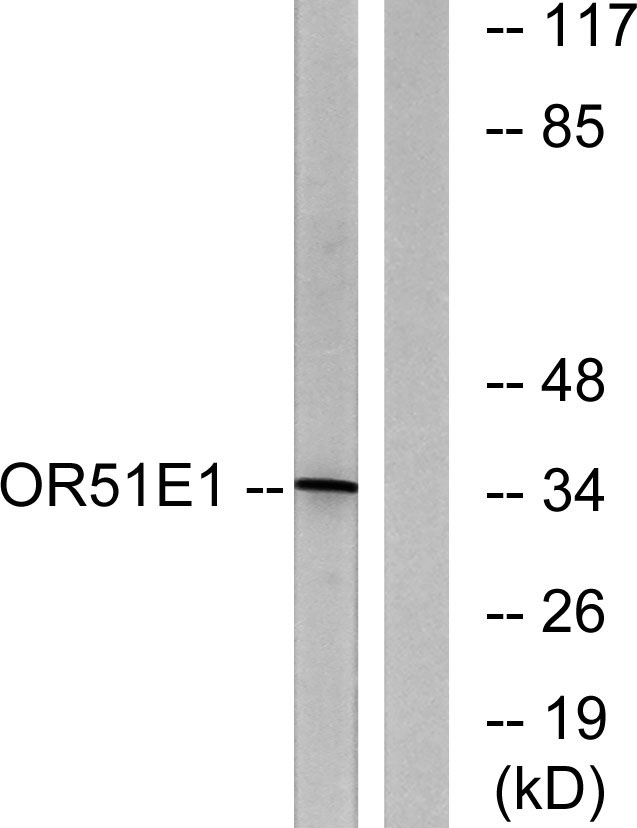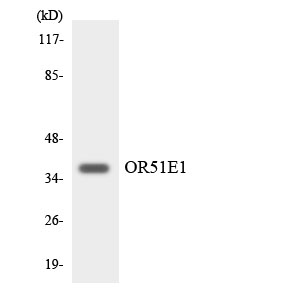产品名称
D-GPCR Rabbit Polyclonal Antibody
别名
OR51E1; GPR164; OR51E1P; OR52A3P; POGR; PSGR2; Olfactory receptor 51E1; D-GPCR; G-protein coupled receptor 164; Olfactory receptor 52A3; Prostate-overexpressed G protein-coupled receptor; Prostate-specific G protein-coupled receptor 2
蛋白名称
Olfactory receptor 51E1
存储缓冲液
Liquid in PBS containing 50% glycerol, 0.5% BSA and 0.02% New type preservative N.
Human Gene Link
http://www.ncbi.nlm.nih.gov/sites/entrez?db=gene&term=143503
Human Swissprot No.
Q8TCB6
Human Swissprot Link
http://www.uniprot.org/uniprotkb/Q8TCB6/entry
免疫原
The antiserum was produced against synthesized peptide derived from human OR51E1. AA range:241-290
特异性
D-GPCR Polyclonal Antibody detects endogenous levels of D-GPCR protein.
稀释度
WB 1:500 - 1:2000. IF 1:200 - 1:1000. ELISA: 1:20000. Not yet tested in other applications.
宿主
Polyclonal, Rabbit,IgG
背景介绍
Olfactory receptors interact with odorant molecules in the nose, to initiate a neuronal response that triggers the perception of a smell. The olfactory receptor proteins are members of a large family of G-protein-coupled receptors (GPCR) arising from single coding-exon genes. Olfactory receptors share a 7-transmembrane domain structure with many neurotransmitter and hormone receptors and are responsible for the recognition and G protein-mediated transduction of odorant signals. The olfactory receptor gene family is the largest in the genome. The nomenclature assigned to the olfactory receptor genes and proteins for this organism is independent of other organisms. [provided by RefSeq, Jul 2008],
组织表达
Highly expressed in prostate. Very low levels may be detected in some other tissues, such as placenta, skeletal muscle, heart, ovary and testis. Up-regulated in prostate cancers.
细胞定位
Cell membrane ; Multi-pass membrane protein .
信号通路
Olfactory transduction;
功能
function:Odorant receptor .,similarity:Belongs to the G-protein coupled receptor 1 family.,tissue specificity:Highly expressed in prostate. Very low levels may be detected in some other tissues, such as placenta, skeletal muscle, heart, ovary and testis. Up-regulated in prostate cancers.,
纯化
The antibody was affinity-purified from rabbit antiserum by affinity-chromatography using epitope-specific immunogen.




